Interview: Alois Di Leo & ‘The Boy Who Wanted to be a Lion’
Alois Di Leo has made his mark in the last year as one of the animation and filmmaking industry’s more promising up-and-comers. Born in Peru, he studied architecture and graphic design in Brazil where he stumbled upon Flash and developed a fondness for animation. His subsequent student short “The Boy Who Wanted To Be A Lion”, produced at the UK’s prestigious National Film and Television School, tells the story of a deaf child in the 1960s whose fondness for lions initially manifests itself as an innocuous fantasy that soon develops disconcerting ramifications. The film has been a staple of the international festival circuit over the past year, garnering numerous accolades and high praise for its finely crafted visual and narrative style. Skwigly caught up with Alois about his experiences producing the film, its unique production process and his take on how well it has been received.
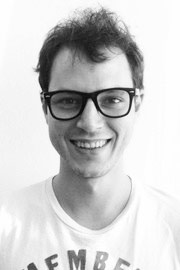
Alois Di Leo
The NFTS really does seem to invest a lot in terms of production and promotion of their students’ output, as well as what is generally regarded as being a consistently high standard of work. To what degree are they involved as far bringing a crew of students together?
They’re involved on all levels, really. First of all, at the NFTS there are majors for pretty much every filmmaking profession, so when it comes down to making our graduation films we’re given the opportunity to team up with a variety of people. Within the school we have cinematographers, sound designers, post-production specialists, compositors, music composers, production designers and producers – really everything you need.
Do you pick the people you want to work with or is that decided for you?
Both really, because in every major there are eight students, so basically everybody gets to work with everybody on one project, except for sound people who get the opportunity to work on other types of films, like documentaries. Firstly we pitched the ideas to the producer who we then paired up with; then we pitched the chosen story to all the other departments. Sometimes you have people in mind who you know you want to work with and sometimes the tutors decide when there are conflicts. In the first year at school we all worked together a lot, so by the second year most people knew who they wanted to work with. You form relationships.
So when you and the writer (Jérémie Dubois) came together, did he have the idea for the story before, or was it something you both worked on together?
During my first year I had met some of the writers and I really liked what they were doing, so I asked early on for them to send me scripts. Jérémie sent me this story he’d done as part of a one-day exercise at the school where he had to write a fairytale, and I read it and really, really liked it. He was reluctant at first because he had other stories that were also very good, but I was very eager to do this one. Therefore, we worked together, developing it step by step and making the script as it is now.
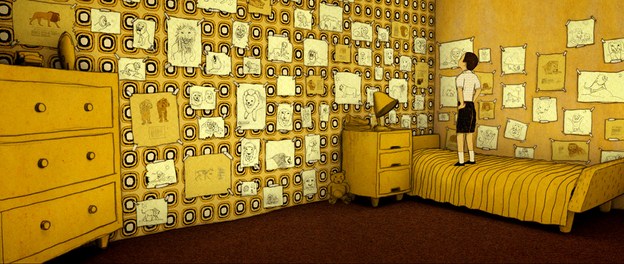
At that point had the film already been set in the sixties?
I can’t remember if that was in the original story or not…
It does work well on an aesthetic level; the colour-scheme matches up with the theme of the movie but also fits perfectly with that era…
There were many things attached to that, setting it in the sixties. One was that we wanted to make sure that the environment could make the story plausible – that someone would be able to sneak into a zoo for example, which nowadays would be probably impossible. Also the design side, because the story was so inspired by realism – these are normal people who live in normal houses – I wanted to do something in terms of design that was more interesting than a flat screen, so that was another reason. And yes, the colour palette actually sits perfectly with the initial idea of making the whole film ‘sort of yellowish’.
With this film and a couple of the other earlier projects you’ve produced while studying, you seem to gravitate toward the notion of duel personalities, either on a symbolic level (‘Disagreements’, 2008) or in a more literal sense (‘Second Opinion’, 2008) and in this case the child who’s cultivating this animalistic behaviour within himself. Is that a coincidence or is it a subject that intrigues you?
To be honest I’ve never thought about it that way, but on some level it’s very much like me, I guess, or like pretty much everyone, having different sides to yourself…but it wasn’t a conscious thing.
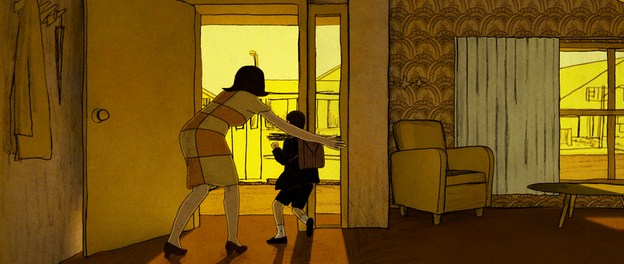
Looking at those earlier projects, you’ve used the opportunities to dabble in various techniques – stop motion, sand on glass, pixilation…what determined your choice of visual style for “Boy…”?
It was quite difficult, because on one level I wanted to keep it realistic but didn’t want the movements themselves to be too real, where people move a lot unnecessarily. Because I wanted to focus the whole film on the boy, I ended up with a mixture of rotoscoping and original animation. As such, some bits of the film are fully animated, while others used live action as a reference for the key-frames, the in-betweens done separately, on pencil and paper. If we had rotoscoped all the character animation then their personalities would have changed too much, especially in the case of the parents. I had to hand-draw the in-betweens because they moved too much and I wanted those characters to be stiff, in contrast to the boy jumping around and everything.
At times there seem to be a lot of different animation processes working alongside one another. What was the process for blending the animation with the CG elements?
Well I used 3D CG for the backgrounds; we basically built and fully designed all the sets in 3D. That bit I sort of treated like it was live-action – to have all the elements fully designed with the objects we had chosen and everything, it was very well planned. With the cinematographer (Benoit Soler) we lit all the environments and worked on the camera positions, tweaking the lights for each camera, so it was very interesting to work with a cinematographer within animation. For each shot I would draw the background really quickly with pencil and animate to it, then I would grab my animation, put it in the 3D environment and set the camera up to match what I had initially drawn. Then I would render that frame of the 3D background, print it on A3 paper and retrace it adding more elements, textures, shadows and so on. At that point I would bring the 3D render into Photoshop to reproduce the lighting so that it focused the attention towards the main character. Finally it would get coloured, imported into After Effects and the solid colours would all be replaced with paper textures to create the palette.
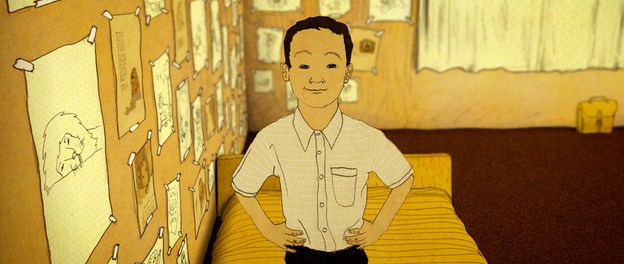
It visually seems to be more rooted in live-action filmmaking than a great deal of animated shorts, which I think is one of the reasons why it kind of stands out visually. There is a sort of added element of realism in terms of the way the shots are composed, the way the focus is pulled and possibly with the characters being based, to a degree, on the movements of actors.
Yeah, I really felt that the story needed that type of style, which for me, was very important for people to get emotionally attached to the character. My main goal was to really grab on to those emotions, so I worked on every single detail to do that, and sometimes that required a greater degree of realism than in other moments.
With those rotoscoped elements, is there a greater dependency on the actors’ physical performances than, say, if you were just using voice-over artists? And did you have to actively direct the actors when they were being filmed for the reference footage?
Yes, I did, though not a lot – it was a very quick shoot. The parents were, I think, one day or half a day or something like that. It was very quick because it was really just for reference and I would animate or add whatever I needed to add later on. They did know the script and I did give them feedback, but it was nothing compared to a live action shoot. It was much more relaxed, quick and experimental. With the boy, because I really needed to understand how a boy in a lion costume would move, we made him an actual costume – not as detailed as in the film, but enough to give him the personality to feel like he was a lion. And yeah, again some of those bits I used and some were just for reference. It was very interesting.
What do the actors think of the end result?
Ah, they like it! They like it a lot.
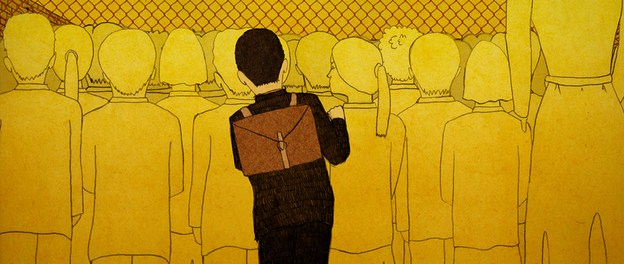
I really felt that the film’s overall atmosphere owes a tremendous amount to its use of sound. What went into crafting that environment?
It was very, very difficult because initially I didn’t want any sounds of reality; I just wanted the whole thing to be from the boy’s point of view. We had music and a lot of distorted noise, but the atmosphere wasn’t working out. It was too light, almost comical, so we started to add more elements of reality, voices and so on, creating contrasts between the two worlds. That really made it stronger and more believable. It was a really hard process, we redid the sound about five or six times and that delayed production by two months! It was very difficult, and the music also kept on changing. My initial references were more sixties, I wanted something like Nino Rota, but it was just too playful. It wasn’t working with the ending that we used, so we’d scratch it out and start it again and so on. Then right at the end it came together, in the last five days.
While it ultimately plays as a general audience film, the story does go into territory that, as an audience member, you don’t necessarily expect it to…
It was definitely my intention. I wanted to shake the audience a bit, because I do like that feeling when something really takes me by surprise. I thought that the ending was the right approach to the story I was telling, so it made sense.
Has it ever gotten any negative response?
Nobody has ever approached me to tell me they didn’t like the film, but sometimes I can feel that people are a little bit uncomfortable with it and that it takes a little while to sink in. I take that as something good, because I think that some things can actually be really nice when you are caught by surprise, when you’re feeling something that you were not expecting to feel.
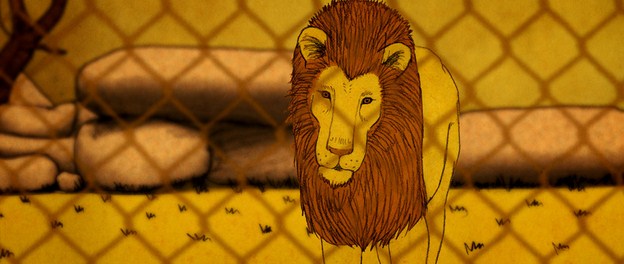
To that end, have you been surprised by the film’s reception on the whole?
It’s always a surprise because after working on it for a year you get to the point where you have no idea what’s even going on anymore, you’re just watching and not feeling anything. Then when I first started showing it, it started getting some nice reviews that made the whole thing have a purpose. In the end it was made for people to watch it and hopefully enjoy it, so that’s a great feeling.
What would you say is the most positive thing you’ve gained from the experience as a director and as an animation practitioner?
Well, I think because of the type of film it is and the ending in particular; a lot of people have a lot of questions. For me the best experience came after it was finished, discussing the film with people and hearing what they thought and so on, because it’s only then that you really realise the power that something has. How much people are going to think about it and what they’re going to think, you learn from that for future projects … I think for me that’s been the greatest. Going to festivals, screenings and doing Q&As has helped a lot, especially when you’re a young director and learning.
You currently produce projects under the company name Sinlogo, is that just you or are you part of a larger team? And what kind of things are you working on at the moment, or planning to down the line?
It’s a bunch of people, it was founded by me and my best friend who’s based in Brazil, and we work together on pretty much everything. There are other people as well; animators, web designers and so on that work with us on different projects. We’re always encouraging them to start developing their own work to make it more collaborative. I’ve just shot a live action film and am editing it at the moment; I also just finished a short animated commercial that I did in stop-motion; I’ve been working on some designs, illustration and also some pitching. Hopefully next year I will start another short animation, I’d like to take one year off again and just work on one project. I already have a script written which I really like and I’m going to start the storyboard soon.
“The Boy Who Wanted To Be A Lion” has won multiple awards including the Lotte Reiniger Promotion Award at ITFS Stuttgart, the Prix international du Jury at the Festival International Du Court Metrange D’Animation. For more information go to aloisdileo.com, theboywhowantedtobealion.com, and sinlogobr.com

